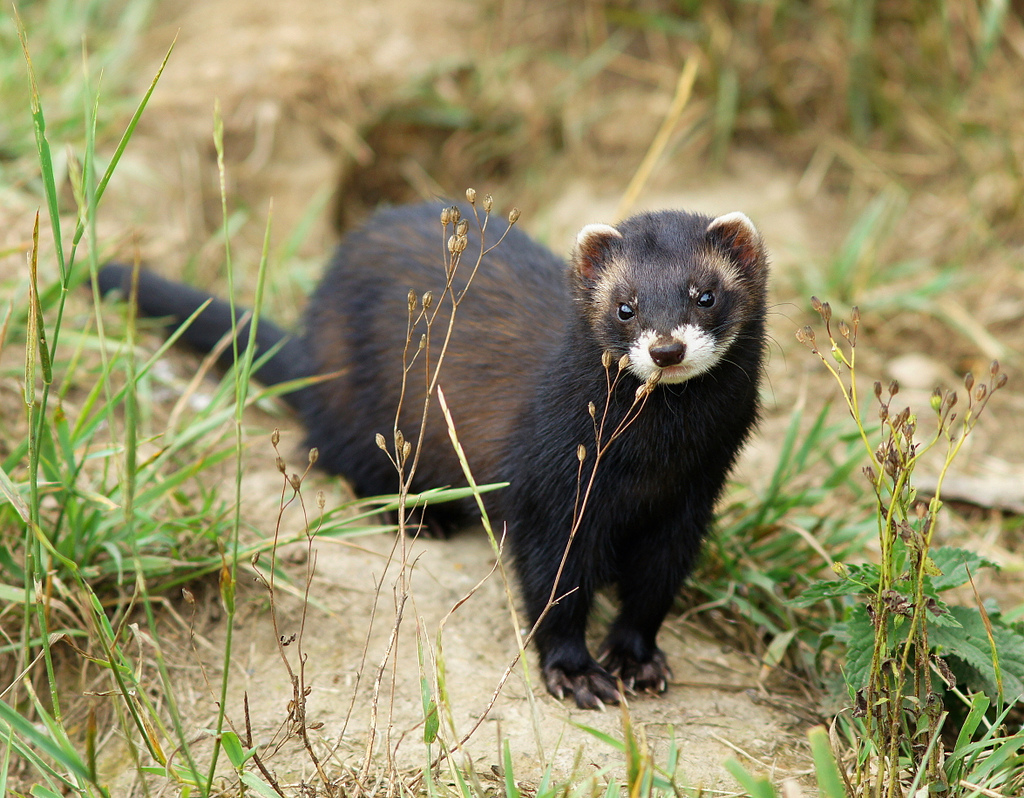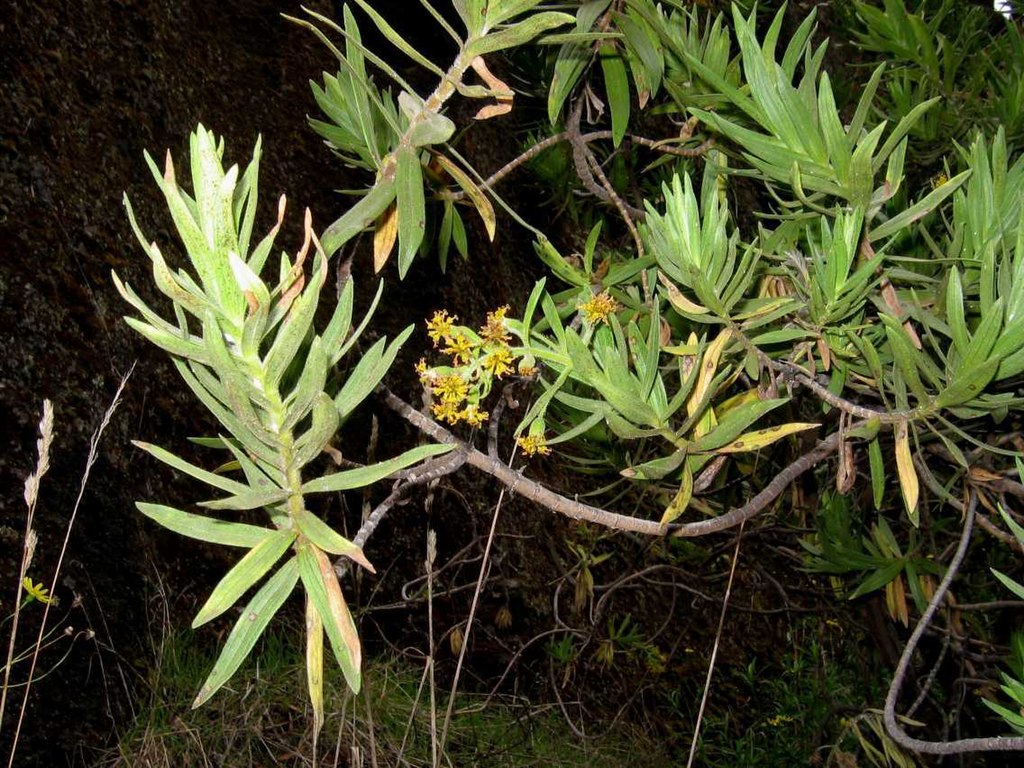Fact Check: Hawaiian Silverswords Fail the Species Pair Challenge
In a recent article at Evolution News (Bechly 2022) I introduced a new argument against Darwinian evolution and a challenge to Darwinists. Here is the argument in a nutshell: Among the 350,000 described fossil species, we can identify numerous abrupt origins of new body plans within a 5–10 million years window of time. Among an estimated 8.7 million recent species we find no such body plan disparity in any pairs of species that diverged in a similar time frame according to molecular clock studies. This contradicts expectations from a Darwinian perspective.
The simple challenge to Darwinists is to find a single pair of recent species that have diverged within about 5 million years ago and that exhibit a disparity in body plan similar to major transitions in the history of life (e.g., compared to Pakicetus and Basilosaurus). Apparently, I rattled the Darwinist cage, because it took only a few days for a fevered response at the Peaceful Science forum. They claimed to have met the challenge and also invited me to join the discussion at the forum.
Therefore, let me first briefly explain why I declined this invitation and will never participate at Peaceful Science, which in my view deserves to be rebranded as Unpeaceful Science (Clemmons & Luskin 2021). This forum is dominated mainly by the very same group of hardcore anti-ID activists (such as Joe Felsenstein, John Harshman, Arthur Hunt, Puck Mendelssohn, and “Rumraket”) who are notorious for their vitriolic attacks against intelligent design proponents at other Darwinist forums like Panda’s Thumb. You just have to skim through the comments in some of the threads to realize that there is not the slightest interest in a mutually respectful, fair, and unbiased discussion of arguments and evidence. Sorry not to be sorry that I have zero tolerance for such behavior and will never waste my time in a forum that exhibits such a low level of intellectual integrity.
Two Blatant Examples
Also, the recent two threads at Peaceful Science about my article abound with uncharitable comments and misrepresentations of the arguments. Here are just two blatant examples:
At the very beginning of the initial posting of the thread at Peaceful Science there is a gross misrepresentation of my argument by commenter Art Hunt. Contrary to his statement, my argument was emphatically not that “should a pair of species diverge and go off on their evolving ways, one would expect to see (inevitably, invariably?) dramatic differences in such species pairs as time passes.” How anybody could read my article and come to this conclusion is beyond me. By the way: In my argument I also do not claim that all recent species pairs that diverged only a few million years ago necessarily must look so similar that they appear indistinguishable to laypeople, even though this is often the case. The crucial point is rather to find different body plans in species that diverged only a few million years ago, which is common in the fossil record but virtually absent among recent species.
Another commenter, named Roy, claimed in the second thread at Peaceful Science that I exaggerated the sudden origin of trilobites within 13 million years and misrepresented the paper by Daley et al. (2018). He triumphantly says:
I’ve checked the reference given for his claim of “the origin of trilobites from worm-like ancestors in less than 13 million years”. Not only does it not mention worm-like anything, but it actually says
“The first arthropod traces (Rusophycus ) appear at approximately 537 Ma, shortly after the start of the Cambrian at approximately 540 Ma. Crown group euarthropods (trilobites) appear at 521 Ma…”
That’s 16my between trilobites and Rusophycus, trace fossils which are definitely not worm-like because they show signs of being made by legs.
Bechly, like most ID and YEC advocates, must be counting on no-one checking his references.
Well, what I do count on is an average reading comprehension. Of course, Rusophycus traces show evidence of legs! That’s the whole point. Contrary to most trace fossils, which are paleontological problematica and cannot be attributed to a specific organism as trace maker, every undergraduate paleontology student learns that Rusophycus traces are the resting traces of trilobites and trilobite-like arthropods. So, by these traces we have evidence for crown group arthropods like trilobites for 537 million years ago. The same paper by Daley et al. (2018) also explicitly acknowledged that 560–550 million years ago there as yet existed no bilaterian animals (and certainly no arthropods). That is because of the clear evidence from so-called BST-localities, which are Ediacaran localities of the Burgess Shale Type that could have preserved even small and soft-bodied animal ancestors. The current mainstream view is that at best, coelenterates (jellies) and enigmatic worm-like animals existed at this Ediacaran time. Even if this were true (I challenged such claims for Ediacaran animals in several article series at Evolution News), it would mean that the arthropod body plan with exoskeleton, articulated legs, mouth parts, compound eyes, central nervous system, and gut system evolved within 13 million years from such assumed jelly- or worm-like ancestors. The 13 million years represent the time span from the Ediacaran BST-localities 550 million years ago to the oldest Rusophycus traces 537 million years ago. Commenter Roy did not understand either my argument or the Daley article (also see Bechly 2018). Unfortunately, such an instance of the Dunning-Kruger effect is all too commonly found among the most vocal critics of intelligent design on the Internet.
Meanwhile, a very active atheist commenter and anti-ID activist, writing under the pseudonym Rumraket, suggested that dog breeds qualify because they look so different (just think of a Pug and an Irish Setter) and originated within a few thousand years. However, there are of course two major problems with this preposterous claim:
- The differences in size, shape, and fur of dog breeds are not at all differences in body plan but just simple variations within the same species based on phenotypic plasticity. No organisms with a different body plan would be able to interbreed and produce fertile offspring.
- The rapid changes in appearance are based on human breeding, which is a teleologically guided process and thus an example of intelligent design. No comparable variations exist in any wild canine species.

Commenter Roy suggested that otters and ferrets should meet the challenge because they diverged “just over 10mya.” According to TimeTree.org, otters (genus Lutra) and ferrets (genus Mustela)
diverged an estimated 17.5 million years ago. And of course, they do
not even remotely exhibit anything like different body plans. Commenter
Matthew Dickau in the same thread predicts that I will likely reject the
examples as not different enough. Yup, that is exactly what I do,
because they aren’t. Actually, they are still very similar even though
they had more than triple the time available that separates pakicetids
and earliest pelagicetid whales. The fact that none of the biologists
at Peaceful Science, who definitely should know better than “30-year veteran Roy,” objected to this ludicrous example is very telling indeed.


A More Serious Response
But enough of this. Let’s move on to a more interesting claim that the challenge has been met. Has it? Spoiler alert: no, it hasn’t!
This more serious contender was suggested by botanist Arthur G. Hunt, a professor of plant and soil sciences at the University of Kentucky and one of the most active commenters at Peaceful Science. He mentions the fascinating case of a group of plants called the Hawaiian Silversword Alliance. They comprise 33 species in the three genera Argyroxiphium, Dubautia, and Wilkesia, which are endemic to the Hawaiian Islands (Carr 1985). They form a monophyletic group (clade) within the sunflower family Asteraceae, and are believed to have colonized Hawaii about 5 million years ago with a single pioneer species of tarweed from California that then quickly radiated into differently adapted species (Baldwin et al. 1990; Baldwin & Sanderson 1998; Barrier et al. 2001; Landis 2018). These species exhibit a surprising diversity of phenotypes and, especially in the genus Dubautia, we even find very different growth forms such as cushion plants, mat plants, rosette plants, subshrubs, shrubs, trees, and lianas or vines (Baldwin & Robichaux 1995; Baldwin 1997; Baldwin & Sanderson 1998). Therefore, they are considered one of the most important examples of adaptive radiation in the plant kingdom (Purugganan & Robichaux 2005; Blonder et al. 2016). Professor Hunt’s claim is simple and seductive: the Hawaiian Sword Alliance allegedly developed very different body plans within 5 million years and thus perfectly meets my challenge. Does it? Not really, and here is why.
A minor quibble concerns the dating of the radiation, which proved to be tricky in the absence of a fossil record. The current estimates rest on multiple assumptions concerning the phylogenetic relationship, paleoclimate, and paleogeography (Landis et al. 2018), which introduces considerable uncertainty. The fact that other radiations on Hawaii are much older than the estimate for Silverswords (Baldwin & Sanderson 1998), should at least raise some doubts concerning the reliability of this estimate. After all, the Kure Atoll, the oldest island of the archipelago was already formed 29 million years ago. Nevertheless, this issue is of minor importance, and we can grant the current consensus dating of 5.1-5.2 million years (Baldwin & Sanderson 1998; Landis et al. 2018) for the sake of the argument.
A more important point is the fact that the differences among the species of Hawaiian Silverswords are all related to different growth forms and allometric shifts of already existing structures. Even though the differences appear superficially striking, they do not involve any novel body plans (i.e., no new proteins, new tissues, or new organs). Therefore, the radiation of Hawaiian Silverswords is not comparable to major body plan transitions such as from “worm” to trilobite, from terrestrial quadruped to marine whale, or from hair-like dino-fuzz to pennaceous feathers, etc. If the different growth forms of Hawaiian Silverswords really represented different body plans, they would not have been classified in the same family and subfamily as their continental tarweed relatives, and, in the case of Dubautia, even within the same genus, at least not prior to the cladistic revolution in the 1970s when typological thinking still prevailed in biological systematics.


A Second Crucial Issue
The second crucial issue is phenotypic plasticity: On the University of Hawaii Botany website about the Hawaiian Silversword Alliance you will find photos of very different pincussion-like and shrub/tree-like growth forms within the same species, Dubautia waialealae. A very similar variability is found in Dubautia laxa, for which “it is unclear if the recognized subspecies represent unique evolutionary entities or if the ecological and morphological diversity within this group is a product of recurrent local adaptation or phenotypic plasticity” (McGlaughlin & Friar 2011). This fact alone totally debunks the claim. If such different growth forms were really comparable to body plan differences bigger than in any mammals, as Art Hunt claims, this would be as if we were to find a quadruped with a normal tail and a marine animal with flippers and fluke as variations within the same species. Of course, such different growth forms are not comparable to different body plans but just represent phenotypic plasticity that is a common phenomenon in the plant kingdom.
It is of course also true that many of the different phenotypes of Hawaiian Silverswords do correlate with taxonomic differences in genus and species (Carr 1985; Blonder et al. 2016: 221). However, the very fact that there are species like Dubautia waialealae with very different growth forms shows that the same can be reasonably assumed for the ancestral species prior to the radiation. Such an ancestral species could have colonized the Hawaiian Islands as early as 29 million years ago when the oldest island (Kure) originated but certainly much earlier than 5.2 million years (Baldwin & Sanderson 1998). During the later radiation such ancestral phenotypic plasticity could become partly stabilized and fixed in different species. This scenario is strongly supported by the finding that the Hawaiian Silverswords seem to have originated from a polyploid hybrid (Baldwin & Sanderson 1998; Barrier et al. 1999, 2001; Purugganan & Robichaux 2005), which is known to increase phenotypic plasticity in plants (Weber & D’Antonio 2000; Ainouche & Jenczewski 2010; Te Beest et al. 2012; Cara et al. 2013).
My judgment that these plants do not have very different body plans, in spite of their often strikingly different growth forms, is also supported by the fact that they still frequently hybridize without sterility (Carr & Kyhos 1981, 1986; Carr 1985, 1995; Baldwin et al. 1990; Baldwin 2006). I can only repeat myself: organisms with different body plans cannot successfully interbreed. It is a common Darwinian dogma that new body plans correlate with significant genetic changes in early development (John & Miklos 1988: 309; Van Valen 1988; Thomson 1992: 111; Arthur 1997: 14+21; Kalinka & Tomancak 2012; Willmore 2012; Meyer 2013), which arguably would prevent any hybridization.
An Avian Example
Since we are talking about Hawaiian island radiations, it may also be worth mentioning the avian example of the honeycreepers, which is yet another example for such radiations of “closely related species [that] are characterized by levels of phenotypic diversity otherwise associated with higher taxa” (Baldwin et al. 1990). The Hawaiian honeycreepers are a group of passerine birds endemic to the Hawaii, of which many are already extinct or critically endangered. They are believed to be most closely related to the Asian rosefinches of the genus Carpodacus and to have colonized the Hawaiian Islands 5.7–7.2 million years ago (Lerner et al. 2011). These beautiful birds have very different plumage and very different beak shapes, from short and thick finch-like beaks to long, thin, and curved beaks. Might these birds meet the challenge? Again, the answers must be no, because changes in color pattern and beak shape are not at all body plan differences. It has been experimentally demonstrated in the famous Galápagos finches (Abzhanov et al. 2004, 2006; Lawson & Petren 2017) that very simple genetic switches are responsible for modification of beak shape. Mainly two simple genes, BMP4 and Calmodulin, control all three dimensions of the bird’s beak. The same certainly also applies to the very different beaks of the Hawaiian honeycreepers, as well as to their different colors.
Similar arguments could be made about the radiation of cichlid fish in the East African Lake Malawi, which “constitute the most extensive recent vertebrate adaptive radiation” (Malinsky et al. 2018). Within about 4 million years, this radiation produced quite different-looking animals in terms of size, shape, color, and behavior (Schedel et al. 2019), but again no new body plans. These popular ornamental fish are still very similar genetically and often hybridize (Kuraku & Meyer 2008). Even Young Earth Creationists do not deny that neo-Darwinian mechanisms may quickly change such simple traits and explain fast speciation, and neither do I.
To be clear: The rejection of these examples is neither moving the goalposts nor committing the “no true Scotsman” fallacy. They simply do not meet the condition of different body plans. It should not be too difficult to realize that quantitative modifications and variations in size, shape, color, behavior, or growth form are not the same thing as the de novo origin of totally new organ systems such as the counter-current heat exchange system in whales or the origin of all the organs necessary to make an arthropod from a worm-like ancestor. If Darwinists should find something significantly better than Silverswords or dog breeds, I will happily be the first to recognize a successful response. But of course, even if such a single example were to be found, it would not be sufficient to remove the general problem of a clear pattern of big changes in short time being ubiquitous in the fossil record but not in the present fauna. This pattern is undeniable and requires an explanation. Anyway, my challenge still stands and has not yet been met. Try again and try harder, and next time also try not to misrepresent the argument!
References
- Abzhanov A, Protas M, Grant BR, Grant PR, Tabin CJ 2004. Bmp4 and morphological variation of beaks in Darwin’s finches. Science 305(5689), 1462–1465. DOI: 10.1126/science.1098095.
- Abzhanov A, Kuo WP, Hartmann C, Grant BR, Grant PR, Tabin CJ 2006. The calmodulin pathway and evolution of elongated beak morphology in Darwin’s finches. Nature 442, 563–567. DOI: 10.1038/nature04843.
- Ainouche ML, Jenczewski E. 2010. Focus on polyploidy. The New Phytologist 186(1), 1–4. DOI: 10.1111/j.1469-8137.2010.03215.x.
- Arthur W 1997. The origin of animal body plans. Cambridge University Press: Cambridge (UK).
- Baldwin BG 1997. Adaptive radiation of the Hawaiian silversword alliance: congruence and conflict of phylogenetic evidence from molecular and non-molecular investigations. pp. 103–128 in: Givnish TJ, Sytsma KJ (eds). Molecular Evolution and Adaptive Radiation. Cambridge University Press: Cambridge (UK), 638 pp.
- Baldwin BG 2006. Contrasting patterns and processes of evolutionary change in the tarweed-silversword lineage: Revisiting Clausen, Keck, and Hiesey’s findings. Annals of the Missouri Botanical Garden 93(1), 64–93. DOI: 10.3417/0026-6493(2006)93[64:CPAPOE]2.0.CO;2.
- Baldwin BG, Robichaux RH 1995. Historical biogeography and ecology of the Hawaiian silversword alliance: new molecular phylogenetic perspectives. pp. 259– 287 in: Wagner WL, Funk VA (eds).Hawaiian Biogeography: Evolution on a Hot Spot Archipelago. Smithsonian Institution Press: Washington (DC), 464 pp. DOI: 10.5962/bhl.title.129909.
- Baldwin BG, Sanderson MJ 1998. Age and rate of diversification of the Hawaiian silversword alliance (Compositae). PNAS 95(16), 9402–9406. DOI: 10.1073/pnas.95.16.9402.
- Baldwin BG, Kyhos DW, Dvorák J 1990. Chloroplast DNA Evolution and Adaptive Radiation in the Hawaiian Silversword Alliance ( Asteraceae-Madiinae). Annals of the Missouri Botanical Garden 77(1), 96–109. JSTOR: 2399629.
- Barrier M, Baldwin BG, Robichaux RH, Purugganan MD 1999. Interspecific hybrid ancestry of a plant adaptive radiation: Allopolyploidy of the Hawaiian silver- sword alliance (Asteraceae) inferred from floral homeotic gene duplications. Molecular Biology and Evolution 16(8), 1105–1113. DOI: 10.1093/oxfordjournals.molbev.a026200.
- Barrier M, Robichaux RH, Purugganan MD 2001. Accelerated regulatory gene evolution in an adaptive radiation. PNAS 98(18), 10208–10213. DOI: 10.1073/pnas.181257698.
- Bechly G 2018. Alleged Refutation of the Cambrian Explosion Confirms Abruptness, Vindicates Meyer. Evolution News May 29, 2018.
- Bechly G 2022. Species Pairs: A New Challenge to Darwinists. Evolution News April 25, 2022.
- Blonder B, Baldwin BG, Enquist BJ, Robichaux RH 2016. Variation and macroevolution in leaf functional traits in the Hawaiian silversword alliance (Asteraceae). Journal of Ecology 104(1), 219–228. DOI: 10.1111/1365-2745.12497.
- Cara N, Marfil CF, Masuelli RW. 2013. Epigenetic patterns newly established after interspecific hybridization in natural populations of Solanum. Ecology and Evolution 3(11), 3764–3779. DOI: 10.1002/ece3.758.
- Carr GD 1985. Monograph of the Hawaiian Madiinae (Asteraceae): Argyroxiphium, Dubautia, and Wilkesia. Allertonia 4(1), 1–123. JSTOR: 23186117.
- Carr GD 1995. A fully fertile intergeneric hybrid derivative from Argyroxiphium sandwicense ssp. macrocephalum X Dubautia menziesii (Asteraceae) and its relevance to plant evolution in the Hawaiian Islands. American Journal of Botany 82(12), 1574–1581. DOI: 10.1002/j.1537-2197.1995.tb13860.x.
- Carr GD, Kyhos DW 1981. Adaptive Radiation in the Hawaiian Silversword Alliance (Compositae-Madiinae). I. Cytogenetics of Spontaneous Hybrids. Evolution 35(3), 543–556. DOI: 10.1111/j.1558-5646.1981.tb04916.x.
- Carr GD, Kyhos DW. 1986. Adaptive Radiation in the Hawaiian Silversword Alliance (Compositae-Madiinae). II. Cytogenetics of Artificial and Natural Hybrids. Evolution 40(5), 959–976. DOI: 10.1111/j.1558-5646.1986.tb00565.x.
- Clemmons T, Luskin C 2021. An Unpeaceful Peace. Salvo 57.
- Daley AC, Antcliffe JB, Drage HB, Pates S 2018. Early fossil record of Euarthropoda and the Cambrian Explosion. PNAS 115(21), 5323–5331. DOI: 10.1073/pnas.1719962115.
- John B, Miklos GLG 1988. The Eukaryote Genome in Development and Evolution. Allen & Unwin: London (UK), xviii+416 pp.
- Kalinka AT, Tomancak P 2012. The evolution of early animal embryos: conservation or divergence?Trends in Ecology & Evolution 27(7), 385–393. DOI: 10.1016/j.tree.2012.03.007.
- Kuraku S, Meyer A 2008. Genomic analysis of cichlid fish ‘natural mutants’. Current Opinion in Genetics & Development 18(6), 551–558. DOI: 10.1016/j.gde.2008.11.002.
- Landis MJ, Freyman WA, Baldwin BG 2018. Retracing the Hawaiian silversword radiation despite phylogenetic, biogeographic, and paleogeographic uncertainty. Evolution 72(11), 2343–2359. DOI: 10.1111/evo.13594.
- Lawson LP, Petren K 2017. The adaptive genomic landscape of beak morphology in Darwin’s finches. Molecular Ecology 26(19), 4978-4989. DOI: 10.1111/mec.14166.
- Lerner HRL, Meyer M, James HF, Hofreiter M, Fleischer RC 2011. Multilocus Resolution of Phylogeny and Timescale in the Extant Adaptive Radiation of Hawaiian Honeycreepers. Current Biology 21, 1838–1844. DOI: 10.1016/j.cub.2011.09.039.
- Malinsky M, Svardal H, Tyers AM, Miska EA, Genner MJ, Turner GF, Durbin R 2018. Whole-genome sequences of Malawi cichlids reveal multiple radiations interconnected by gene flow. Nature Ecology & Evolution 2, 1940–1955. DOI: 10.1038/s41559-018-0717-x.
- McGlaughlin ME, Friar EA 2011. Evolutionary diversification and geographical isolation in Dubautia laxa(Asteraceae), a widespread member of the Hawaiian silversword alliance. Annals of Botany 107(3), 357–370. DOI: 10.1093/aob/mcq252.
- Meyer SC 2013. The Origin of Body Plans. Chapter 13, pp. 255–270 in: Darwin’s Doubt: The Explosive Origin of Animal Life and the Case for Intelligent Design. HarperOne: New York (NY), 512 pp.
- Purugganan MD, Robichaux RH 2005. Adaptive Radiation and Regulatory Gene Evolution in the Hawaiian Silversword Alliance (Asteraceae). Annals of the Missouri Botanical Garden 92(1), 28–35. JSTOR: 3298646.
- Schedel FDB, Musilova Z, Schliewen UK 2019. East African cichlid lineages (Teleostei: Cichlidae) might be older than their ancient host lakes: new divergence estimates for the east African cichlid radiation. BMC Evolutionary Biology 19:94, 1–25. DOI: 10.1186/s12862-019-1417-0.
- Te Beest M, Le Roux JJ, Richardson DM, Brysting AK, Suda J, Kubesová M, Pysek P. 2012. The more the better? The role of polyploidy in facilitating plant invasions. Annals of Botany 109(1), 19–45. DOI: 10.1093/aob/mcr277.
- Thomson KS 1992. Macroevolution: The Morphological Problem. American Zoologist 32, 106–112. DOI: 10.1093/icb/32.1.106.
- Van Valen L 1988. How Do Major Evolutionary Changes Occur? Evolutionary Theory 8(3), 173–176. [PDF]
- Weber E, D’Antonio CM 2000. Phenotypic plasticity in hybridizing Carpobrotus spp. (Aizoaceae) from coastal California and its role in plant invasion. Canadian Journal of Botany 77(10), 1411–1418. DOI: 10.1139/b99-091.
- Willmore KE 2012. The Body Plan Concept and Its Centrality in Evo-Devo. Evolution: Education and Outreach 5(S2), 219–230. DOI: 10.1007/s12052-012-0424-z.
No comments:
Post a Comment